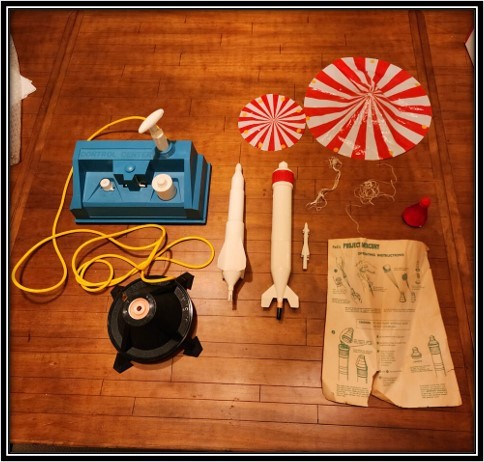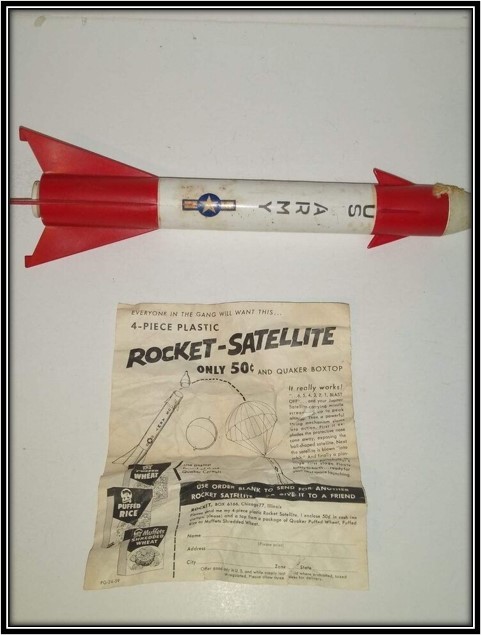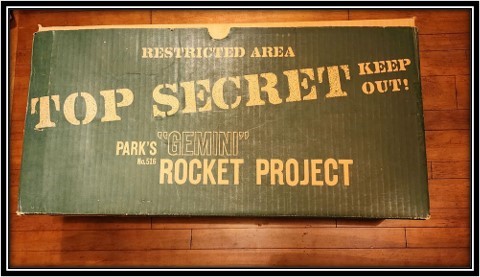Good Saturday morning fellow ECAHF’ers. When I was a kid, we experimented a lot with launching things into the air. We found a pipe that was just the right diameter to have a golf ball slip down. Jammed into the ground at an angle, we’d drop a lit cherry bomb followed by a golf ball and “mortared” that ball into “orbit”. At least that’s what we kids excitingly exclaimed as we howled at how far that golf ball went. The ball was actually shot far into the woods behind our house, never to be seen again.
We didn’t yell “Fore!!” but probably should have. There may have been a deer or two bonked on the head by those rapidly descending spheres. When those woods were eventually torn down to build a subdivision, finding all our golf balls might have caused the builders to wonder if there had been a golf course there back in the Stone Age.
Ah, but I digress. In addition to launching golf balls, we sent “antronaunts” (as we named them) “into space”, hapless ants we caught and put in small bottles taped to kites on windy March days. We provided the unlucky ants no space uniforms or training at how to survive in the thin and rarified air at 100 feet or so, but nonetheless the bugs survived their flight way up there and, when returned to terra firma, we released them back into the environment and to their home mound.
But actually, those ants were the lucky ones. They lived. Their brothers, on the other hand, often succumbed to “Martian death rays” from our magnifying glasses.
We shot scores of bottle rockets from glass pop bottles that were eventually converted from makeshift rocket launching “pads” to pennies in our pocket as we returned the bottles to the corner general store for their deposits.
And the toys we received for our birthdays and Christmas included those like that pictured below, water pressure-launched rocket toys, Quaker Oat promotions, and “Estes” model rockets that we would build and launch with the included gun powder “rocket engines”.



The 50’s and 60’s were full of wonder and experimentation with space and flight. But it was play-time that had be done outdoors.
Do you wonder if we’re stunting our future STEM abilities by all the inside video games our kids and grandkids are playing? Playing first person shooter video games instead of actually experimenting with launching rockets has its benefits, I suppose. Video games allegedly provide some improvement in hand-eye coordination. And there’s less risk of putting out one’s eyes or blowing off fingers with video games.
I suppose those were legitimate risks in the 50’s and 60’s…mom wasn’t hovering over us while we were launching golf balls into outer space, shooting bottle rockets, or giving a water pressure rocket launcher double the number of suggested pumps to see how high we could get it to go…but I knew of no kid on my block blinded or missing fingers due to launching rockets. There were a few premature “launching pad” explosions with our bottle rockets, though.
There was a news piece the other day on TV about an “epidemic of blindness” in our youth. “Blindness” was stretching the truth to get a headline, but what’s actually happening is that near-sightedness (not blindness) IS an epidemic (according to the study), allegedly caused by too much inside play time and insufficient outside play time.
So, it turns out that there actually IS some risk to our eyes by playing video games. Recruiting 20-20 vision pilots is going to be increasingly tough for our military. I suppose drones and robo-jets will take care of that problem.
But when I was a kid, we stayed by the window, looking sadly outside at the rain, and hoping the weather would change so we could go outside. Outside was where all the fun, imagination, and testing of limits were. Not inside.
And thirty years before we were standing at the window lamenting the bad weather and launching little white satellites (golf balls) into the ionosphere, on March 16, 1926, American Robert H. Goddard, according to History.com, “successfully launched the world’s first liquid-fueled rocket at Auburn, Massachusetts, the first man to give hope to dreams of space travel. The rocket traveled for 2.5 seconds at a speed of about 60 mph, reaching an altitude of 41 feet and landing 184 feet away. Fueled by liquid oxygen and gasoline, the rocket stood 10 feet tall, constructed out of thin pipes.
“The Chinese developed the first military rockets in the early 13th century using gunpowder and probably built firework rockets at an earlier date. Gunpowder-propelled military rockets appeared in Europe sometime in the 13th century, and in the 19th century British engineers made several important advances in early rocket science. In 1903, an obscure Russian inventor named Konstantin E. Tsiolkovsky published a treatise on the theoretical problems of using rocket engines in space, but it was not until Robert Goddard’s work in the 1920s that anyone began to build the modern, liquid-fueled type of rocket that by the early 1960s would be launching humans into space.
“Goddard, born in Worcester, Massachusetts, in 1882, became fascinated with the idea of space travel after reading the H.G. Wells’ science fiction novel War of the Worlds in 1898. He began building gunpowder rockets in 1907 while a student at the Worcester Polytechnic Institute and continued his rocket experiments as a physics doctoral student and then physics professor at Clark University. He was the first to prove that rockets can propel in an airless vacuum-like space and was also the first to explore mathematically the energy and thrust potential of various fuels, including liquid oxygen and liquid hydrogen. He received U.S. patents for his concepts of a multistage rocket and a liquid-fueled rocket, and secured grants from the Smithsonian Institute to continue his research.
“In 1919, his classic treatise A Method of Reaching Extreme Altitudes was published by the Smithsonian. The work outlined his mathematical theories of rocket propulsion and proposed the future launching of an unmanned rocket to the moon. The press picked up on Goddard’s moon-rocket proposal and for the most part ridiculed the scientist’s innovative ideas. In January 1920, The New York Times printed an editorial declaring that Dr. Goddard “seems to lack the knowledge ladled out daily in high schools” because he thought that rocket thrust would be effective beyond the earth’s atmosphere. (Three days before the first Apollo lunar-landing mission in July 1969, the Times printed a correction to this editorial.)
“In December 1925, Goddard tested a liquid-fueled rocket in the physics building at Clark University. He wrote that the rocket, which was secured in a static rack, “operated satisfactorily and lifted its own weight.” On March 16, 1926, Goddard accomplished the world’s first launching of a liquid-fueled rocket from his Aunt Effie’s farm in Auburn.
“Goddard continued his innovative rocket work until his death in 1945. His work was recognized by the aviator Charles A. Lindbergh, who helped secure him a grant from the Guggenheim Fund for the Promotion of Aeronautics. Using these funds, Goddard set up a testing ground in Roswell, New Mexico, which operated from 1930 until 1942. During his tenure there, he made 31 successful flights, including one of a rocket that reached 1.7 miles off the ground in 22.3 seconds. Meanwhile, while Goddard conducted his limited tests without official U.S. support, Germany took the initiative in rocket development and by September 1944 was launching its V-2 guided missiles against Britain to devastating effect. During the war, Goddard worked in developing a jet-thrust booster for a U.S. Navy seaplane. He would not live to see the major advances in rocketry in the 1950s and ’60s that would make his dreams of space travel a reality.
NASA’s Goddard Space Flight Center in Greenbelt, Maryland, is named in his honor.”
Onward and upward!
Barry Fetzer
ECAHF Historian
